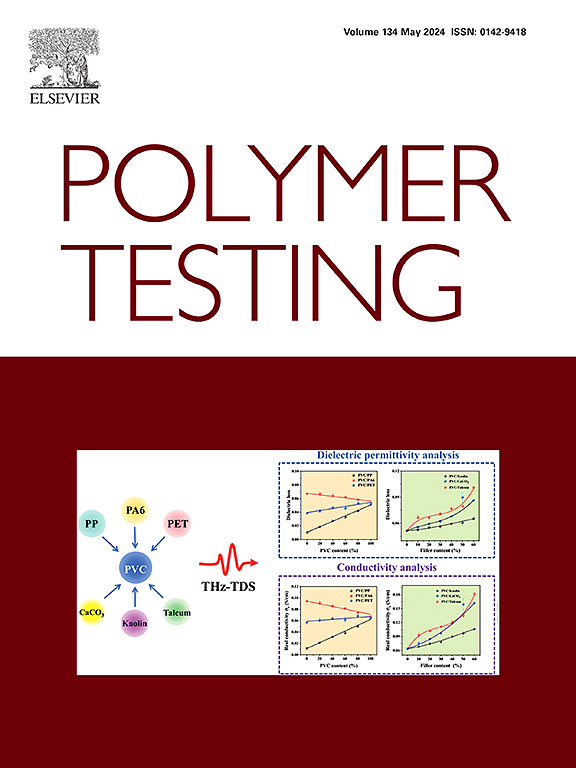Experimental investigation of the effect of long-term water exposure on dielectric materials
IF 5
2区 材料科学
Q1 MATERIALS SCIENCE, CHARACTERIZATION & TESTING
引用次数: 0
Abstract
Recent work studying dielectric materials has produced increases in dielectric permittivity and dielectric loss in dielectric elastomer materials, leading to increased material performance. However, little is known about the aging and breakdown of these materials within a marine environment, which could affect material performance. A basic study of the aging and breakdown of two different state-of-the-art dielectric materials, 3M's Very High Bond (VHB) 4910 and bi-axially oriented polypropylene (BOPP), in a marine environment is completed. To begin, accelerated life tests are conducted to obtain artificially aged samples, aged to a maximum duration of 12 months in distilled water. Cyclic and non-cyclic tensile loading testing are used to characterize the material fatigue of the unaged vs aged samples and to determine how the material properties change over time when exposed to a simulated marine environment. For VHB, aging seems to transition the hyperelastic (non-linear) behavior to purely elastic (linear) behavior. As aging level and stretch rate increase, the point of maximum elongation decreases and elastic modulus increases. Similar observations are noted for BOPP, although the effect of its bi-axial orientation must be considered. An increase in stretch rate causes an increase in elastic modulus, and the effect of aging looks to be dependent on orientation where for the orientation normal to the long axis, the elastic modulus increases as aging increases and for the orientation parallel to the long axes, the elastic modulus decreases as aging increases. For BOPP, orientation plays a greater effect on stress and elastic modulus than aging or stretch rate.
求助全文
约1分钟内获得全文
求助全文
来源期刊

Polymer Testing
工程技术-材料科学:表征与测试
CiteScore
10.70
自引率
5.90%
发文量
328
审稿时长
44 days
期刊介绍:
Polymer Testing focuses on the testing, analysis and characterization of polymer materials, including both synthetic and natural or biobased polymers. Novel testing methods and the testing of novel polymeric materials in bulk, solution and dispersion is covered. In addition, we welcome the submission of the testing of polymeric materials for a wide range of applications and industrial products as well as nanoscale characterization.
The scope includes but is not limited to the following main topics:
Novel testing methods and Chemical analysis
• mechanical, thermal, electrical, chemical, imaging, spectroscopy, scattering and rheology
Physical properties and behaviour of novel polymer systems
• nanoscale properties, morphology, transport properties
Degradation and recycling of polymeric materials when combined with novel testing or characterization methods
• degradation, biodegradation, ageing and fire retardancy
Modelling and Simulation work will be only considered when it is linked to new or previously published experimental results.
 求助内容:
求助内容: 应助结果提醒方式:
应助结果提醒方式:


